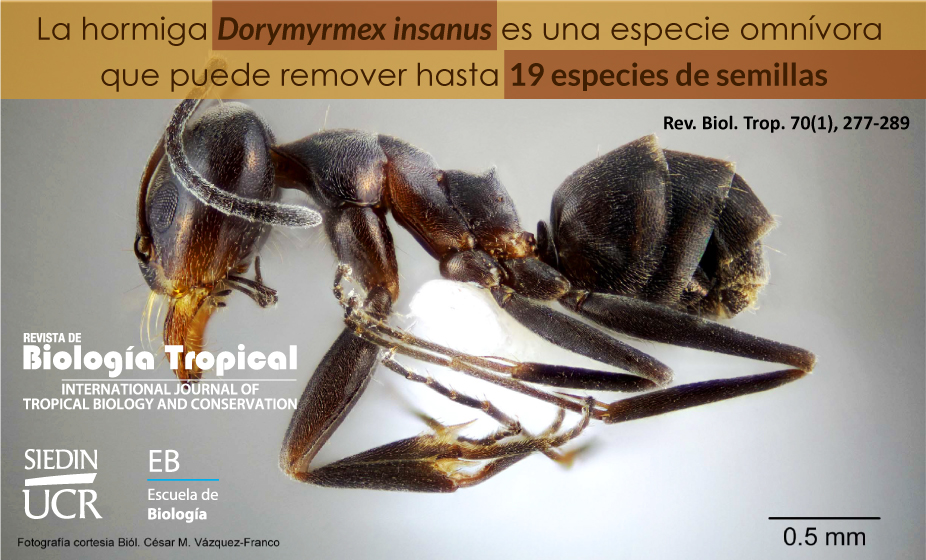Resumen
Introducción: La remoción de semillas por parte de las hormigas es una interacción que puede afectar en gran medida la dinámica y estructura de la vegetación. Este aspecto es bien conocido para las hormigas granívoras; sin embargo, hay poca información sobre el efecto de las omnívoras. Objetivo: Evaluar el impacto potencial de la hormiga omnívora Dorymyrmex insanus sobre la vegetación. Métodos: En la Reserva Pedregal, Ciudad de México, se identificaron los ítems en el área del basurero para diez colonias de hormigas, durante un año, cubriendo la época de lluvia y sequía. Para cada temporada calculamos la diversidad de semillas y analizamos la posible relación entre el tamaño de las semillas y su abundancia en los basureros, con modelos de regresión. También hicimos pruebas de germinación con semillas de Tagetes micrantha, comparando las encontradas en los basureros con las provenientes de las plantas. Resultados: D. insanus eliminó semillas de 19 especies de plantas, así como restos de plantas (hojas, ramitas, raíces) y restos de insectos. La diversidad de semillas fue mayor en la estación lluviosa pero la mayor abundancia lo fue en la estación seca. Al analizar la relación entre la longitud de las semillas y la abundancia en el área del basurero, encontramos que las hormigas preferían semillas de alrededor de 10 mm. También encontramos que germinaron más semillas de T. micrantha cuando fueron manipuladas previamente por hormigas. Conclusiones: La hormiga D. insanus participa activamente en la remoción de semillas de varias especies, favoreciendo la germinación, y la estacionalidad afecta la selectividad de recursos.
##plugins.facebook.comentarios##

Esta obra está bajo una licencia internacional Creative Commons Atribución 4.0.
Derechos de autor 2022 Revista de Biología Tropical







